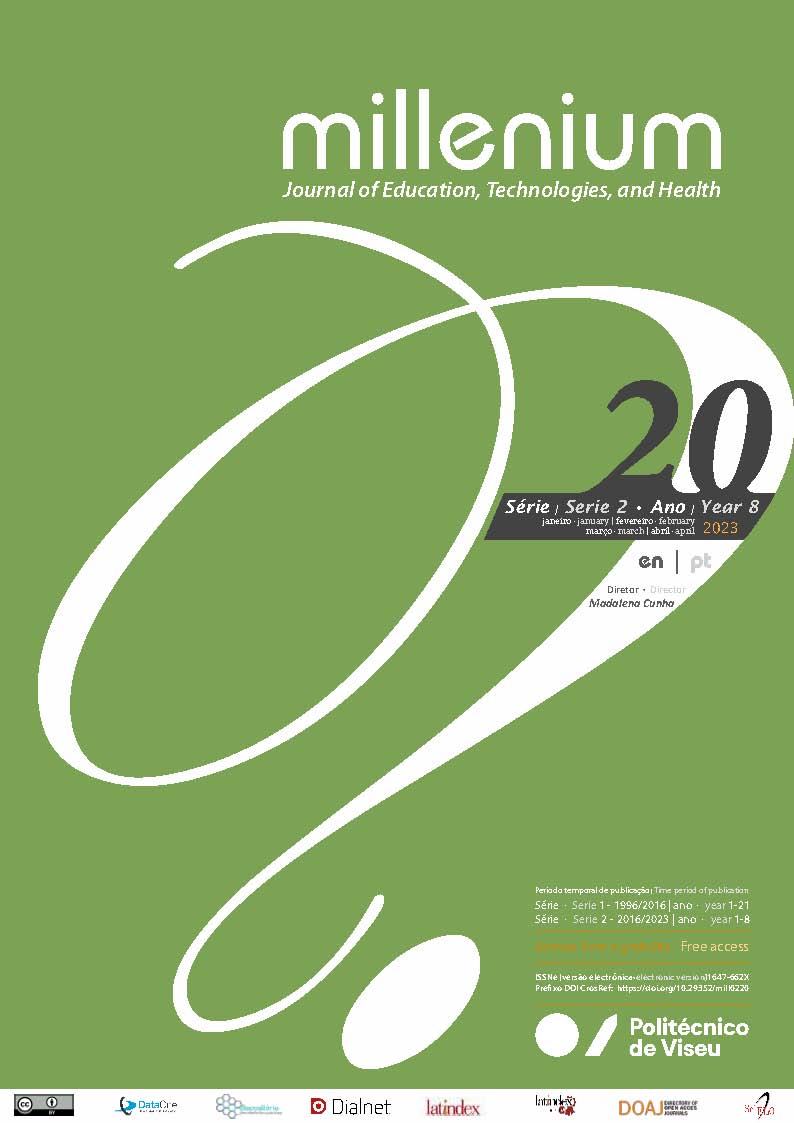The globalisation of european sex education in the 21st century
DOI:
https://doi.org/10.29352/mill0220.28786Abstract
Sexuality education is an evidence-based teaching and learning process that addresses attitudes, behaviours, and beliefs related to sexual health and sexuality. This education must be adapted individually and collectively, and be based on promoting respect for Human Sexual Rights. Sexuality education is essential for building more inclusive societies and improving the sexual health of the population. It is important to understand the impact of legislation on the establishment of the educational curriculum at different levels of education. The government, through education, should contribute to reducing sexual discrimination and risky sexual behaviour. There is a wide range of sexuality education content around the world. Nevertheless, the Sustainable Development Goals of the 2030 Agenda approved by the United Nations (UN, 2015) set out the joint path to be followed by countries and the different societies that make them up. The goals to be achieved are aimed at improving the lives of all citizens, including the objectives of health and well-being, quality education and women's equality. In addition to these global targets, numerous international organisations, such as the World Health Organization (WHO, 2022) and the United Nations Educational, Scientific and Cultural Organization (UNESCO, 2018), have repeatedly called on governments to improve equitable access to sexuality education and health programmes. Existing inequalities by country remain stark and negatively influence the health of their residents (WHO, 2021). In most countries where such education is provided, its main purpose is usually aimed at preventing sexually transmitted infections (STIs, Boonstra, 2015). Therefore, the mandatory and regulated content of the curriculum is oriented towards STI control and contraception, and even so this restrictive approach fails to address the challenge related to the increase in risky sexual behaviour and STIs. The difficulty of addressing this issue internationally requires the establishment of collaborative Global Health strategies between countries (UNESCO, 2018)
Downloads
References
Boonstra, D. (2015). Advancing sexuality education in developing countries: evidence and implications in Ponzetti, J.J.(Ed.), Evidence-based Approaches to Sexuality Education (1ed.). New York, United States: Routledge. https://doi.org/10.4324/9781315755250
Calvo, S. (2021). Educación sexual con enfoque de género en el currículo de la educación obligatoria en España: avances y situación actual. Educatio Siglo XXI, 39(1), 281-304. https://doi.org/10.6018/educatio.469281
Cunha-Oliveira, A., Camarneiro, A. P., Gómez-Cantarino, S., Cipriano-Crespo, C., Queirós, P. J. P., Cardoso, D., Santos, D. G., y Ugarte-Gurrutxaga, M. I. (2021). The Integration of Gender Perspective into Young People’s Sexuality Education in Spain and Portugal: Legislation and Educational Models. International Journal of Environmental Research and Public Health, 18(22), 11921. https://doi.org/10.3390/ijerph182211921
De Haas, B., y Hutter, I. (2019). Teachers’ conflicting cultural schemas of teaching comprehensive school-based sexuality education in Kampala, Uganda. Culture, Health & Sexuality, 21(2), 233-247. https://doi.org/10.1080/13691058.2018.1463455
EEGSE-European Expert Group on Sexuality Education (2016). Sexuality education–what is it? Sex Education, 16(4), 427-431. https://doi.org/10.1080/14681811.2015.1100599
World Health Organisation (2021). Intervenciones de salud sexual y reproductiva en el compendio de la OMS sobre la CSU. World Health Organisation. https://www.who.int/publications/i/item/9789240022867
World Health Organisation. (2022). Salud Sexual. World Health Organisation. https://www.who.int/health-topics/sexual-health#tab=tab_1
NU. (2015). Resolución 70/1. Transformar nuestro mundo: la Agenda 2030 para el Desarrollo Sostenible aprobada por la Asamblea General el 25 de septiembre de 2015. ONU. https://www.un.org/sustainabledevelopment/es/
Parker, R., Wellings, K., y Lazarus, J.V. (2009). Sexuality education in Europe: An overview of current policies. Sex Education, 9(3), 227-242. https://doi.org/10.1080/14681810903059060
UNESCO. (2018). Orientaciones técnicas internacionales sobre educación en sexualidad. UNESCO. https://www.who.int/docs/default-source/reproductive-health/isbn-978-92-3-300092-6.pdf?sfvrsn=eba2c2c9_8
Sperling, J. (2021). Comprehensive sexual health education and intersex (in)visibility: an ethnographic exploration inside a California high school classroom. Sex Education, 21(5), 584-599. https://doi.org/10.1080/14681811.2021.1931834
Published
How to Cite
Issue
Section
License

This work is licensed under a Creative Commons Attribution 4.0 International License.
Authors who submit proposals for this journal agree to the following terms:
a) Articles are published under the Licença Creative Commons (CC BY 4.0), in full open-access, without any cost or fees of any kind to the author or the reader;
b) The authors retain copyright and grant the journal right of first publication, allowing the free sharing of work, provided it is correctly attributed the authorship and initial publication in this journal;
c) The authors are permitted to take on additional contracts separately for non-exclusive distribution of the version of the work published in this journal (eg, post it to an institutional repository or as a book), with an acknowledgment of its initial publication in this journal;
d) Authors are permitted and encouraged to publish and distribute their work online (eg, in institutional repositories or on their website) as it can lead to productive exchanges, as well as increase the impact and citation of published work
Documents required for submission
Article template (Editable format)





